#Ieoh Island
Explore tagged Tumblr posts
Text
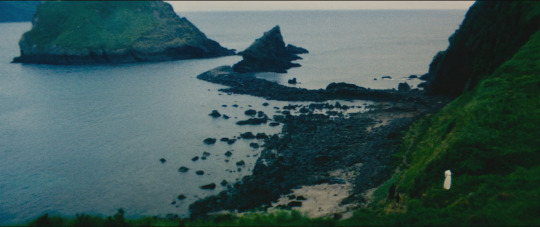
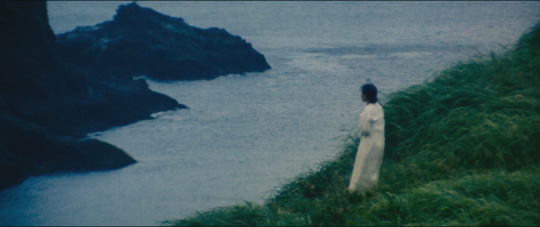

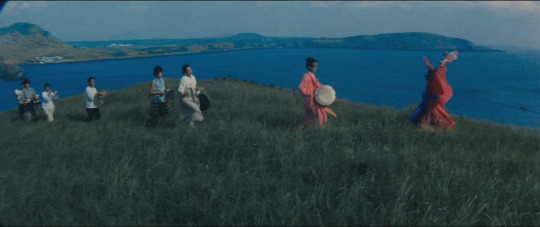
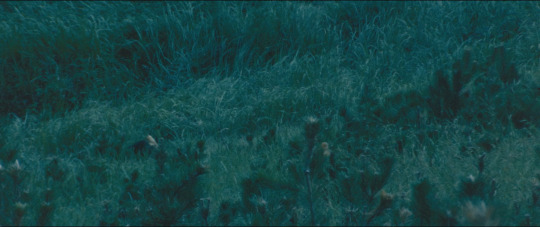

Io Island, Kim Ki-young, 1977
17 notes
·
View notes
Note
Hi, I hope you’re well. Wanted to send in my ask for the movie meme. Easy A, the lovely bones and bones and all
Hi! I am, thank you! I hope you're well too 😊
Easy A
never seen | want to see | the worst | bad | whatever | not my thing | good | great | favorite | masterpiece
Modern YA movie adaptations of significant literary canon works, my beloved! I eat them all up!
The Lovely Bones
never seen | want to see | the worst | bad | whatever | not my thing | good | great | favorite | masterpiece
The story is hard to watch of course, but I really do think The Lovely Bones is such a showcase of Peter Jackson's technical skill as a director. He's so, so good. I actually even use a scene from this movie a lot when I'm teaching. It's this one below where her sister finds the evidence. It's a masterclass in non-verbal storytelling and narrative tension building. Just - - yeah. A perfect scene.
youtube
Bones and All
never seen | want to see | the worst | bad | whatever | not my thing | good | great | favorite | masterpiece
It's been on my list since the trailer dropped, but I still haven't seen it! Hmm, might try and prioritise it over the weekend, thanks for the reminder ;-)
Ask me about movies
#it's always so interesting to see which movies you guys send through with these memes#i was planning on watching the first omen this weekend but bones and all might pair well with it#i got a copy of ieoh island to watch this weekend too#dark theme weekend apparently haha#welcome to my ama#film asks
2 notes
·
View notes
Text

So hilariously, I actually put more energy into finishing my April and May lists this month than actually watching the ones on my June list, but! I did finish both of those and managed to get through six of my June picks, so I'm pleased with that.
This was a fun list to do - I don't think anything completely blew me away, but I really enjoyed most of the movies I watched. The Passion of Joan of Arc is, of course, a masterpiece, and while dated in some respects, feels as relevant as ever in others.
God's Own Country was beautiful, and a good one to tick off my list (killer performances from the cast especially), and both Willow and Invasion of the Body Snatchers were really fun.
Unexpectedly, two of these movies ended up being folk horror which delighted me - Ieoh Island, a 1977 Korean horror film about a journalist who dies at sea and the subsequent investigation on an island inhabited only by the widows of dead sailors, and Nanny, a 2022 horror about a Senegalese nanny haunted by dreams which weaves in West African folklore.
Ieoh Island was definitely the better of the two - Nanny unfortunately had a very clunky and abrupt last act and honestly, I think probably was juggling too many themes. An amazing central performance by Anna Diop though! Ieoh Island wasn't just more cohesive, the story just felt so focused which allowed it to dive deep (pun intended) into some really interesting and fucked up themes. I really recommend it!
Onto July!
June 2024 movie challenge

June is Pride Month! Watch a film by an LGBTQIA+ filmmaker, or about LGBTQI+ characters. Some suggestion here and here.
Watch a movie by a woman filmmaker, bonus points if it's an under-seen film.
A Quiet Place: Day One is out this month - watch any movie with limited dialogue. Some suggestions.
Watch a movie set in a hotel, or with characters on holiday. Some suggestions.
It's also Father's Day this month in much of the world! Watch any movie about fatherhood. Some suggestions.
Watch a fantasy film.
Get into French New Wave cinema with one of the movies on this list.
Watch a movie featuring a mistaken or secret identity. Some suggestions.
Find an American movie you love off this list and watch its foreign recommendation.
Watch a film with an occupation in the title i.e. The Wedding Planner, The Piano Teacher, etc.
#movies#was genuinely surprised how much i enjoyed willow though#and also how little i apparently knew about it#i'd planned to do it as a double feature with wolfwalkers but i got interrupted when a friend rang and we talked for too long haha
18 notes
·
View notes
Text



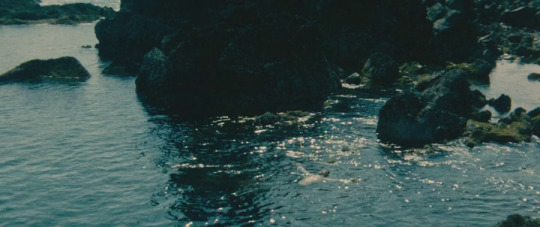

이어도 Io Island (1977) dir. Kim Ki-young
11 notes
·
View notes
Photo




Ieoh Island (Kim Ki-young, 1977)
16 notes
·
View notes
Photo
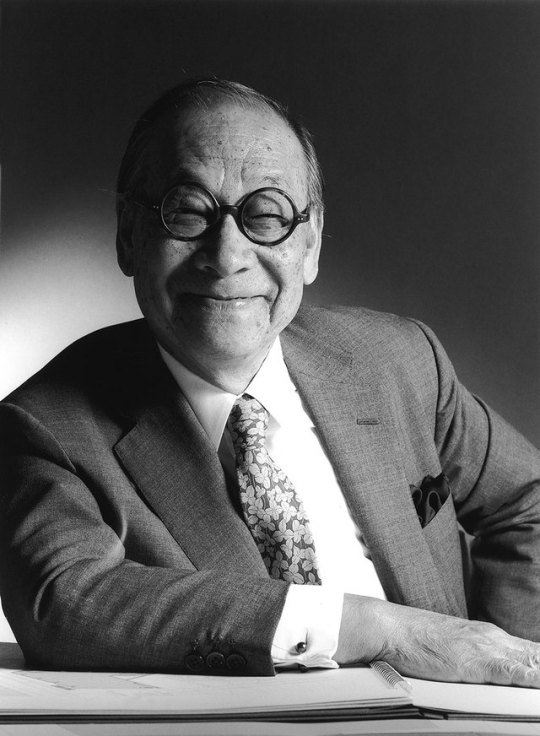
I.M. Pei, world-renowned architect who revived the Louvre, has died at age 102
I.M. Pei, the versatile, globe-trotting architect who revived the Louvre with a giant glass pyramid and captured the spirit of rebellion at the multi-shaped Rock and Roll Hall of Fame, has died at age 102. Pei's death was confirmed Thursday to The Associated Press by Marc Diamond, a spokesman for the architect's New York firm, Pei Cobb Freed & Partners. One of Pei's sons, Li Chung Pei, announced that his father had died early Thursday in his Manhattan home.
Pei's works ranged from the trapezoidal addition to the National Gallery of Art in Washington, D.C., to the chiseled towers of the National Center of Atmospheric Research that blend in with the reddish mountains in Boulder, Colorado.
His buildings added elegance to landscapes worldwide with their powerful geometric shapes and grand spaces. Among them are the striking steel and glass Bank of China skyscraper in Hong Kong and the Fragrant Hill Hotel near Beijing.
His work spanned decades, starting in the late 1940s and continuing through the new millennium. Two of his last major projects, the Museum of Islamic Art, located on an artificial island just off the waterfront in Doha, Qatar, and the Macau Science Center, in China, opened in 2008 and 2009.
Pei painstakingly researched each project, studying its use and relating it to the environment. But he also was interested in architecture as art — and the effect he could create.
"At one level my goal is simply to give people pleasure in being in a space and walking around it," he said. "But I also think architecture can reach a level where it influences people to want to do something more with their lives. That is the challenge that I find most interesting."
Deborah Berke, the dean of the Yale School of Architecture, told CBS News in a phone interview Thursday night "there was no doubt Pei was a genius."
Berke, who met Pei some time ago, described him as "elegant and a gracious gentleman" and pointed out the importance of his earlier work, including his legacy at the New College of Florida in Sarasota where he designed the original three clusters of dormitories in the 1960s.
"They were beautiful, regionally appropriate modern buildings," Berke said, "that illustrated early college life."
Pei, who as a schoolboy in Shanghai was inspired by its building boom in the 1930s, immigrated to the United States and studied architecture at the Massachusetts Institute of Technology and Harvard University. He advanced from his early work of designing office buildings, low-income housing and mixed-use complexes to a worldwide collection of museums, municipal buildings and hotels.
He fell into a modernist style blending elegance and technology, creating crisp, precise buildings.
His big break was in 1964, when he was chosen over many prestigious architects, such as Louis Kahn and Ludwig Mies van der Rohe, to design the John F. Kennedy Memorial Library in Boston.
At the time, Jacqueline Kennedy said all the candidates were excellent, "But Pei! He loves things to be beautiful." The two became friends.
A slight, unpretentious man, Pei developed a reputation as a skilled diplomat, persuading clients to spend the money for his grand-scale projects and working with a cast of engineers and developers.
Some of his designs were met with much controversy, such as the 71-foot faceted glass pyramid in the courtyard of the Louvre museum in Paris. French President Francois Mitterrand, who personally selected Pei to oversee the decaying, overcrowded museum's renovation, endured a barrage of criticism when he unveiled the plan in 1984.
Many of the French vehemently opposed such a change to their symbol of their culture, once a medieval fortress and then a national palace. Some resented that Pei, a foreigner, was in charge.
But Mitterrand and his supporters prevailed and the pyramid was finished in 1989. It serves as the Louvre's entrance, and a staircase leads visitors down to a vast, light-drenched lobby featuring ticket windows, shops, restaurants, an auditorium and escalators to other parts of the vast museum.
"All through the centuries, the Louvre has undergone violent change," Pei said. "The time had to be right. I was confident because this was the right time."
Another building designed by Pei's firm — the John Hancock Tower in Boston — had a questionable future in the early 1970s when dozens of windows cracked and popped out, sending glass crashing to the sidewalks, during the time the building was under construction.
A flurry of lawsuits followed among the John Hancock Mutual Life Insurance Co., the glass manufacturer, and Pei's firm. A settlement was reached in 1981.
Berke called the Hancock Tower a "handsome building" that "surprisingly stood the test of time."
No challenge seemed to be too great for Pei, including the Rock and Roll Hall of Fame, which sits on the shore of Lake Erie in downtown Cleveland, Ohio. Pei, who admitted he was just catching up with the Beatles, researched the roots of rock 'n' roll and came up with an array of contrasting shapes for the museum. He topped it off with a transparent tent-like structure, which was "open — like the music," he said.
In 1988, President Ronald Reagan honored him with a National Medal of Arts. He also won the prestigious Pritzker Architecture Prize, 1983, and the American Institute of Architects Gold Medal, 1979. President George H.W. Bush awarded him the Presidential Medal of Freedom in 1992.
Pei officially retired in 1990 but continued to work on projects. Two of his sons, Li Chung Pei and Chien Chung Pei, former members of their father's firm, formed Pei Partnership Architects in 1992. Their father's firm, previously I.M. Pei and Partners, was renamed Pei Cobb Freed & Partners.
The museum in Qatar that opened in 2008 was inspired by Islamic architectural history, especially the 9th century mosque of Ahmed ibn Tulun in the Egyptian capital of Cairo. It was established by the tiny, oil-rich nation to compete with rival Persian Gulf countries for international attention and investment.
Ieoh Ming Pei was born April 26, 1917, in Canton, China, the son of a banker. He later said, "I did not know what architecture really was in China. At that time, there was no difference between an architect, a construction man, or an engineer."
Pei came to the United States in 1935 with plans to study architecture, then return to practice in China. However, World War II and the revolution in China prevented him from coming back.
During the war, Pei worked for the National Defense Research Committee. As an "expert" in Japanese construction, his job was to determine the best way to burn down Japanese towns. "It was awful," he later said.
In 1948, New York City real estate developer William Zeckendorf hired Pei as his director of architecture. During this period, Pei worked on many large urban projects and gained experience in areas of building development, economics and construction.
Some of his early successes included the Mile High Center office building in Denver, the Kips Bay Plaza Apartments in Manhattan, and the Society Hill apartment complex in Philadelphia.
Pei established his own architectural firm in 1955, a year after he became a U.S. citizen. He remained based in New York City. Among the firm's accomplishments are the Jacob Javits Convention Center in New York City and the United States Holocaust Memorial Museum in Washington.
Pei's wife, Eileen, who he married in 1942, died in 2014. A son, T'ing Chung, died in 2003. Besides sons Chien Chung Pei and Li Chung Pei, he is survived by a daughter, Liane.
Daily inspiration. Discover more photos at http://justforbooks.tumblr.com
18 notes
·
View notes
Photo




Doha museum of islamic art
Driving through doha, past the old city, across the road from the coastline of a man-made island, like a Arab girl wearing a veil of the building, particularly eye-catching, this is the famous Chinese architect of the late Mr. Ieoh Ming pei's final work, doha museum of islamic art.
The walls of the museum are made of white limestone, with simple lines. Two Windows above the outer wall are said to have been inspired by the mysterious eyes of Arab women under their veils. The museum's interior is decorated with geometric patterns and traditional Arab arched Windows in a distinctive islamic style. In the collection layout is also quite innovative, the use of light and shade effect to create a kind of space aesthetic feeling.
Most of the works are from neighboring countries, including Egypt, Turkey, Iran and India, as well as two pieces of Chinese porcelain, which Qatar bought from these countries. Therefore, it doesn't matter if a country has no history. As long as it has money, it can collect the cultural relics of surrounding countries. The independent artificial island where the museum is located was created by the qatari government at the request of i.m. pei.
The museum has five floors, with a souvenir shop and restaurant on the first floor, where you can enjoy the casual dining while enjoying the doha sea view through the lobby Windows. The exhibition on the second floor is arranged on a thematic basis, including the introduction of islamic art, calligraphy, ornamentation, art and science and other components. The exhibition on the third floor is arranged in a timeline, combing the development of islamic art around the world from the 7th century to the 19th century. The fourth and fifth floors are mostly temporary exhibitions.
0 notes
Text
Forthcoming reviews (update)
A quick note to let you know that the aforementioned #koreanfilm review of Kim Tae-yong's psychological drama/thriller MISBEHAVIOUR (여교사 / 2017) will be online at www.hangulcelluloid.com this coming Friday (25 Oct), followed by a dissection of Kim Ki-young's 1977 classic IEOH ISLAND (이어도) shortly after the weekend.
This Saturday (26th) will also see the release of the latest 'What's Korean Cinema?' podcast in which Hangul Celluloid and Podcast on Fire discuss the well respected New Korean Cinema wave comedy ATTACK THE GAS STATION from 1999.



0 notes
Text
Died Louvre Pyramid Architect I.M. Pei at 102
I.M. Pei, architect who designed Louvre Pyramid, dies at 102 NEW YORK — I.M. Pei (PAY), the versatile, globe-trotting architect who revived the Louvre with a giant glass pyramid and captured the spirit of rebellion at the multi-shaped Rock and Roll Hall of Fame, has died at age 102. Pei’s death was confirmed Thursday by Marc Diamond, a spokesman for the architect’s New York firm, Pei Cobb Freed & Partners. One of Pei’s sons, Li Chung Pei, told The New York Times his father had died overnight. Pei’s works ranged from the trapezoidal addition to the National Gallery of Art in Washington, D.C., to the chiseled towers of the National Center of Atmospheric Research that blend in with the reddish mountains in Boulder, Colorado. His buildings added elegance to landscapes worldwide with their powerful geometric shapes and grand spaces. Among them are the striking steel and glass Bank of China skyscraper in Hong Kong and the Fragrant Hill Hotel near Beijing.
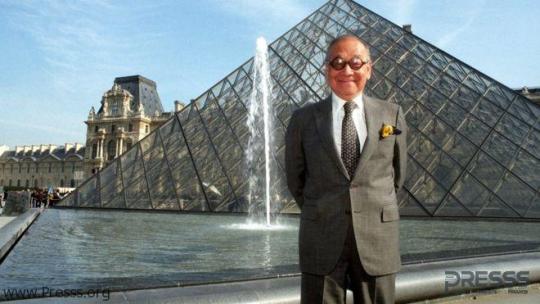
“At one level my goal is simply to give people pleasure in being in a space and walking around it,” he said. “But I also think architecture can reach a level where it influences people to want to do something more with their lives. That is the challenge that I find most interesting.” His work spanned decades, starting in the late 1940s and continuing through the new millennium. Two of his last major projects, the Museum of Islamic Art, located on an artificial island just off the waterfront in Doha, Qatar, and the Macau Science Center, in China, opened in 2008 and 2009. Pei painstakingly researched each project, studying its use and relating it to the environment. But he also was interested in architecture as art — and the effect he could create. “At one level my goal is simply to give people pleasure in being in a space and walking around it,” he said. “But I also think architecture can reach a level where it influences people to want to do something more with their lives. That is the challenge that I find most interesting.” Pei, who as a schoolboy in Shanghai was inspired by its building boom in the 1930s, immigrated to the United States and studied architecture at the Massachusetts Institute of Technology and Harvard University. He advanced from his early work of designing office buildings, low-income housing and mixed-used complexes to a worldwide collection of museums, municipal buildings and hotels. He fell into a modernist style blending elegance and technology, creating crisp, precise buildings. His big break was in 1964, when he was chosen over many prestigious architects, such as Louis Kahn and Ludwig Mies van der Rohe, to design the John F. Kennedy Memorial Library in Boston. At the time, Jacqueline Kennedy said all the candidates were excellent, “But Pei! He loves things to be beautiful.” The two became friends. A slight, unpretentious man, Pei developed a reputation as a skilled diplomat, persuading clients to spend the money for his grand-scale projects and working with a cast of engineers and developers. Some of his designs were met with much controversy, such as the 71-foot (22-meter) faceted glass pyramid in the courtyard of the Louvre museum in Paris. French President Francois Mitterrand, who personally selected Pei to oversee the decaying, overcrowded museum’s renovation, endured a barrage of criticism when he unveiled the plan in 1984. Many of the French vehemently opposed such a change to their symbol of their culture, once a medieval fortress and then a national palace. Some resented that Pei, a foreigner, was in charge. But Mitterrand and his supporters prevailed and the pyramid was finished in 1989. It serves as the Louvre’s entrance, and a staircase leads visitors down to a vast, light-drenched lobby featuring ticket windows, shops, restaurants, an auditorium and escalators to other parts of the vast museum. “All through the centuries, the Louvre has undergone violent change,” Pei said. “The time had to be right. I was confident because this was the right time.”
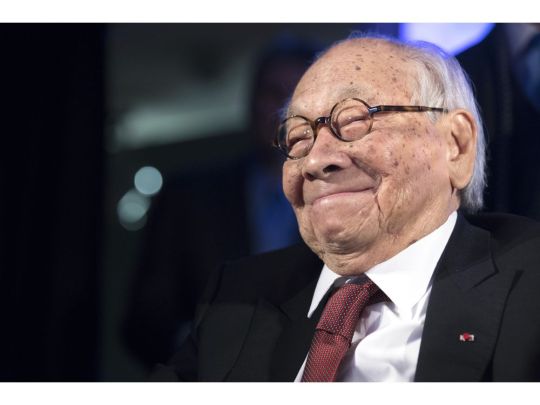
Pei officially retired in 1990 but continued to work on projects. Two of his sons, Li Chung Pei and Chien Chung Pei, former members of their father’s firm, formed Pei Partnership Architects in 1992. Their father’s firm, previously I.M. Pei and Partners, was renamed Pei Cobb Freed & Partners. Another building designed by Pei’s firm — the John Hancock Tower in Boston — had a questionable future in the early 1970s when dozens of windows cracked and popped out, sending glass crashing to the sidewalks, during the time the building was under construction. A flurry of lawsuits followed among the John Hancock Mutual Life Insurance Co., the glass manufacturer, and Pei’s firm. A settlement was reached in 1981. No challenge seemed to be too great for Pei, including the Rock and Roll Hall of Fame, which sits on the shore of Lake Erie in downtown Cleveland, Ohio. Pei, who admitted he was just catching up with the Beatles, researched the roots of rock ‘n’ roll and came up with an array of contrasting shapes for the museum. He topped it off with a transparent tent-like structure, which was “open — like the music,” he said. In 1988, President Reagan honoured him with a National Medal of Arts. He also won the prestigious Pritzker Architecture Prize, 1983, and the American Institute of Architects Gold Medal, 1979. President George H.W. Bush awarded him the Presidential Medal of Freedom in 1992. Pei officially retired in 1990 but continued to work on projects. Two of his sons, Li Chung Pei and Chien Chung Pei, former members of their father’s firm, formed Pei Partnership Architects in 1992. Their father’s firm, previously I.M. Pei and Partners, was renamed Pei Cobb Freed & Partners. The museum in Qatar that opened in 2008 was inspired by Islamic architectural history, especially the 9th century mosque of Ahmed ibn Tulun in the Egyptian capital of Cairo. It was established by the tiny, oil-rich nation to compete with rival Persian Gulf countries for international attention and investment. Ieoh Ming Pei (YEE-oh ming) was born April 26, 1917, in Canton, China, the son of a banker. He later said, “I did not know what architecture really was in China. At that time, there was no difference between an architect, a construction man, or an engineer.” Pei came to the United States in 1935 with plans to study architecture, then return to practice in China. However, World War II and the revolution in China prevented him from coming back. During the war, Pei worked for the National Defence Research Committee. As an “expert” in Japanese construction, his job was to determine the best way to burn down Japanese towns. “It was awful,” he later said. In 1948, New York City real estate developer William Zeckendorf hired Pei as his director of architecture. During this period, Pei worked on many large urban projects and gained experience in areas of building development, economics and construction. Some of his early successes included the Mile High Center office building in Denver, the Kips Bay Plaza Apartments in Manhattan, and the Society Hill apartment complex in Philadelphia. Pei established his own architectural firm in 1955, a year after he became a U.S. citizen. He remained based in New York City. Among the firm’s accomplishments are the Jacob Javits Convention Center in New York City and the United States Holocaust Memorial Museum in Washington. Pei’s wife, Eileen, who he married in 1942, died in 2014. A son, T’ing Chung, died in 2003. Besides sons Chien Chung Pei and Li Chung Pei, he is survived by a daughter, Liane. Published at Thu, 16 May 2019 23:28:46 +0000 Read the full article
0 notes
Video
DHM by Pascal Volk
#Berlin#Mitte#Museum Island#Museumsinsel#Isla de los Museos#DHM#Deutsches Historisches Museum#Erweiterungsbau#Ieoh Ming Pei#I. M. Pei#Berlin Mitte#Nacht#Night#Noche#Wide Angle#Weitwinkel#gran angular#super wide angle#Superweitwinkel#ultra wide angle#Ultraweitwinkel#ww#wa#sww#swa#uww#uwa#Herbst#fall#autumn
0 notes
Link
Doha City, and Qatar in common, are full of history and contrast.
From the rapidly creating cityscape to old artefacts – Qatar has something to offer each visitor. Whether you’re just visiting Doha for a quick stopover, or you’ve planned a longer visit to Qatar, there is plenty to keep you busy. Read on to find the best things to do in Doha, Qatar – and they’re all free!
In the event that you’re short on time in Qatar, otherwise you don’t have transport to explore further, there are plenty of free things to do in Doha City to keep you possessed. The city is fairly walkable, but if you get tired, taxis are very cheap too.
Museum of Islamic Art
A short 15-minute taxi ride from Hamad International Airport, the Museum of Islamic Art is a must-do activity if you’re only passing through Qatar for the day. Built on its own little island of reclaimed land at the southern end of the Doha Corniche – it’s also just a short walk from the famous Souq Waqif.
I’m certainly no art aficionado, but I still thoroughly enjoyed strolling through this museum and taking in the many collections of ancient Islamic art. The building that houses the museum was designed by Chinese architect Ieoh Ming Pei – the same man behind the Louvre pyramid in Paris. The architecture of the building is as captivating as the art it houses.
English guided tours run every Wednesday and Thursday at 2 pm, and Saturday at 4 pm. On the other hand, you'll pick up a free audio guide at reception. The Museum is open each day but Tuesday but has changed opening hours. See the MIA website for further information.
The Doha Corniche
If you’ve ever googled Doha, at some point you will have stumbled upon a breathtaking photo of the cityscape which was no doubt taken from the Doha Corniche. Stretching several kilometers in length, the corniche runs in a horse shoe shape from the West Bay business district to the Museum of Islamic Art, and offers unparalleled views of the City.
The palm-tree lined promenade makes the perfect place for a walk or a jog when the weather allows. If you’re looking to relax, there are plenty of green spaces to grab a coffee and sit down under the shade of a tree to people-watch.
Tip: Sheraton Park at the West Bay end of the Corniche offers free wifi – look out for the iPark sign to connect.
Souq Waqif
Doha’s oldest souq – Souq Waqif – went through an extensive revamp in the mid-2000’s and is now widely regarded as the cultural heart of Doha. An excellent place to shop for gifts or souvenirs, there are a range of goods on offer – from spices and traditional clothing; to local artwork and antiques. Unfortunately, the souq isn’t immune to the odd shop selling cheap and cheerful tourist paraphernalia either.
Souq Waqif is open 10am – noon and again from 4 pm – 10 pm, but it’s in the early evening that it really comes to life. Sit down for shisha and refreshingly cool mint soda at one of the lounges lining the alleyways, or sample the middle-eastern fare on offer at a number of restaurants in the souq.
You can also visit the souq as part of a city tour if you want to make the most out of your time and have help navigating the immense market.
Tip: Skip the animal market within the Souq – if you’re sensitive to animal suffering it will upset you.
If you can, I’d recommend getting out of Doha to explore what’s on offer outside of the capital. There are plenty of free attractions you won’t want to miss in Qatar!
Al-Jassasiya Rock Carvings
There are no signposts, no directions, and very little to tell you you’ve arrived at the right place once you get there. Despite this, it’s well worth the trip to see approx 900 well-preserved petroglyphs depicting cup-shaped holes, boats with oars, fish, scorpions, donkeys and turtles. The age and purpose of the glyphs is still in debate, but they give an impressive glimpse into the ancient roots of Qatar.
The rock carvings are located about an hour north of Doha. Take the Doha Expressway north and merge onto Al Shamal Rd. Take a right at exit 66 and then take the first paved road on your left. Drive down this road for approx 3kms until you see a large area with a simple wire fence surrounding it. Leave your car outside and go exploring by foot.
Al-Zubarah Fort & Ruined Village
Formerly a pearling and fishing village, Al-Zubarah was abandoned in the early 1900’s and was largely buried by sand until archaeologists began excavating the area in the 1980s. You can take a self-guided tour around a small area of the site – follow the signposts or ask at the fort for direction.
The more recent Al-Zubarah Fort was constructed in 1938 using traditional Qatari materials – coral stones, limestone and compacted mud. It was once used as a military and police base, but now houses a visitor centre with exhibitions telling the tale of the town’s history and culture.
lthough possible to get public transport to Al-Zubarah – buses take approx 2 hours and are few and far between. The fort and village will keep you busy for a couple of hours, but past that there is nothing more to do in the area. Give this one a miss if you haven’t got your own car to explore.
From : https://wikitopx.com/travel/things-to-do-in-qatar-701683.html
0 notes
Text







Io Island, Kim Ki-young, 1977
8 notes
·
View notes
Text
Doha, vivace capitale del Qatar meta di uno stopover da favola
Le mete esotiche sono sempre più gettonate: dalle spiagge bianche delle Maldive agli atolli della Polinesia, dalla foresta Indonesiana alla natura selvaggia Thailandese. Tutte mete da sogno, ma non proprio dietro l’angolo!
Le numerose ore di volo e gli scali prolungati disincentivano ancora il viaggiatore, che ripiega su voli diretti o destinazioni più vicine.
Tuttavia alcune compagnie aree adottano la formula stopover per garantire scali piacevoli e avventurosi a chi non sopporta la noia dell’attesa
Si tratta di una vacanza nella vacanza, assolutamente gratuita: lo stopover infatti consente di fermarsi in una tappa prestabilita dalla compagnia senza costi aggiuntivi, prima di raggiungere la meta finale del viaggio.
Traditional Arabic entry door in Doha, Qatar
Hallway in Souq Waqif, Doha, Qatar
La Qatar Airways, in particolare, propone Doha, vivace capitale del Qatar, come meta di uno stopover da favola.
Il Qatar inoltre è un paese eccezionalmente aperto grazie al suo programma di ingresso senza visto, per cui fare uno stopover qui si rivela davvero semplice.
Scopriamo insieme 3 itinerari da 24, 48 e 72 ore durante uno stopover a Doha
24 ORE
Photo credit: Iwan Baan
Iniziamo la giornata con la visita al Museo Nazionale del Qatar, inaugurato a marzo 2019: suddiviso in tre aree tematiche (Beginnings, Life in Qatar, Building the Nation) e dal particolare design a dischi intrecciati che richiama la rosa del deserto, a identificare il legame del Paese con il deserto e il mare.
Per un soggiorno a Doha che si rispetti è quasi d’obbligo una visita all’isola artificiale al largo della West Bay: The Pearl-Qatar. Qui possiamo passeggiare sul lungomare e fermarci in uno dei tanti caffè o ristoranti, per un’esperienza sensoriale che coinvolge soprattutto il gusto.
Photo credit: Iwan Baan
Fra i tanti ristoranti troviamo il Nobu più grande al mondo, ben due ristoranti di Gordon Ramsay, il famoso STK lounge and steakhouse, e ancora l’Al Mourjan e lo Shay Al Shoomos che propongono tradizionale cucina mediorientale.
Nel primo pomeriggio ci prepariamo a esplorare il Souq Waqif, coi suoi vicoli affollati e le architetture tradizionali. Rigorosamente a piedi e con macchina fotografica alla mano per immortalare i frenetici attimi della vita locale.
Concludiamo la giornata con una crociera nella baia di Doha a bordo di un Dhow, tradizionale barca a vela araba… Per ammirare il moderno skyline cittadino e i colori del cielo al tramonto.
48 ORE
Giorno 1
Per i più avventurosi consiglio di trascorrere la mattinata in kayak tra le mangrovie di Al Thakira o di provare gli sport acquatici lungo la Corniche, nel cuore di Doha. Per chi desidera invece scoprire la città in maniera più rilassante, i tour con i bus panoramici di Doha Bus sono un’ottima soluzione.
In compenso tutti (avventurosi e non) dovrebbero visitare il Museo di arte islamica (MIA), che ospita opere secolari provenienti dal mondo islamico in un ambiente architettonico moderno progettato da Ieoh Ming Pei. Per un pomeriggio all’insegna della cultura.
Giorno 2
Ci spostiamo verso sud alla scoperta della riserva naturale di Khor Al Adaid, patrimonio UNESCO conosciuto come “Mare Interno”. Qui il mare raggiunge il cuore del deserto, ed è accessibile solo tramite fuoristrada guidati da autisti esperti sulle splendide dune.
Il safari nel deserto, con giro in cammello, e la cena tipica beduina sotto le stelle completano l’esperienza e la arricchiscono di emozioni uniche e indimenticabili.
72 ORE
Giorno 1
Banana Island Resort Doha
Soggiorniamo presso il Banana Island Resort Doha in una delle sue ville overwater. Si tratta di un resort a cinque stelle al largo della costa di Doha, raggiungibile solo attraverso un catamarano privato.
Propone attività sportive ma lascia spazio anche al relax grazie alla sua Spa circondata da un lussureggiante giardino botanico. Pensate che è l’unico centro benessere all’interno di un resort in tutto il Medio Oriente.
Giorno 2
Rientrati al porto di Doha, ci dirigiamo verso nord al forte di Al Zubarah (anch’esso patrimonio UNESCO) oppure verso ovest per assistere al “palio di Doha”, i cui protagonisti non sono cavalli ma i cammelli del circuito di Shahaniya.
Dopo aver assistito alla corsa di cammelli, possiamo visitare la penisola di Zekret, che con le sue spiagge incontaminate offre l’occasione ideale per liberare mente e cuore.
Il pomeriggio invece lo dedichiamo a del sano divertimento presso l’Angry Birds World, il primo parco divertimenti a tema Angry Birds. Propone giostre interne ed esterne su una superficie di 17.000 mq.
Giorno 3
Trascorriamo la mattinata all’insegna del golf presso l’Education City Golf Club, rinomato per le sue strutture all’avanguardia.
Sfruttiamo invece il pomeriggio per concederci del relax in una delle tante Spa di lusso a Doha, come quella del Mandarin Oriental o dello Sharq Village & Spa.
Concludiamo infine il nostro soggiorno con una visita al Katara Cultural Village, dove si può assistere a concerti, mostre ed esibizioni tutto l’anno, oltre che visitare le straordinarie gallerie d’arte e moschee. Non mancano inoltre i ristoranti, fra cui scegliere quello più adatto alla nostra ultima cena.
Una cosa è certa: che siano 24, 48 o 72 ore, Doha vi resterà nel cuore!
Chiara Pompeo
SOCIAL FB
Visitare Doha in 24, 48 o 72 ore Doha, vivace capitale del Qatar meta di uno stopover da favola Le mete esotiche sono sempre più gettonate: dalle spiagge bianche delle Maldive agli atolli della Polinesia, dalla foresta Indonesiana alla natura selvaggia Thailandese.
0 notes
Text
Spectacular Black & White Illustrations Of Iconic Architectural Landmarks By Designer Andrea Minini
Every city has an architectural landmark, but not all landmarks are made equal. What makes a landmark as famous as the Burj Khalifa? It’s not height (although it could be with the Burj), not grandeur, not beauty. Andrea Minini, today’s featured illustrator, thinks it might be speed. “What I love in graphic design is speed”, she says. “Good projects have to appear clear and powerful at first sight”. These fifteen are certainly that: a stunning set of monochrome illustrations that convey the genius of the architects behind them. See the minds of Zaha Hadid and Frank Gehry at work, conveyed through Andrea Minini’s abstracted design lens.
Architect: Moshe Safdie Experience the multi-cultural luxury of Marina Bay Sands. Singapore’s finest resort was once the world’s most expensive standalone casino (beating Macao), and features a mall, museum, two theatres and floating Crystal Pavilions, a skating rink and of course, a casino. This illustration illuminates the building’s grandiose public platform sitting atop its three pillars, the largest platform of its type in the world.
Architect: Jørn Utzon Take a trip to the sunny ports of Sydney, with this monochrome illustration of Australia’s Sydney Opera House. Designed in the 70’s by Jørn Utzon, its curved arches have held many an opera, dramatic performance or famous singer in its wings. Rendering its shape in black and white highlights the curved beauty of its form.
Architect: Adrian Smith, Marshall Strabala, George J. Efstathiou, William F. Baker Dubai’s oil wealth has funded one impressive building. The tallest building and structure in the world, the Burj Khalifa has beaten many out many opponents (such as the Taipei 101) to earn the title. Its pyramid style is inspired by Islamic architecture, while its concrete Y maximises space for homes and offices running along its length. Minini’s illustration shows its frame in simplistic black and white.
Architect: Herzog & de Meuron Notable events provide a good reason for great buildings. In Beijing, the 2008 Summer Olympics and Paralympics brought a hive of activity that required a beautifully-built stadium. Working with noted Chinese artist Ai Weiwei, this $428 million dollar building was inspired by Chinese ceramics and (in an effort to hide its retractable roof) ended up with a distinctive birds’ nest look. Officially named the Beijing National Stadium, today it lights up like a lantern at night or, in Minini’s representation, as an innovative shape in monochrome colouring.
Architect: Frank Gehry The Guggenheims are known for building the world’s most beautiful museums, and the Guggenheim Museum (Bilbao) is no exception. Famously uniting critics, academics, and the public with its beauty, it sits proudly along Spain’s Nervion River and houses some of the country’s most important works. Minini’s two black and white renders bring us up close and far away from this prominent structure. From afar, its leaves look as if they turn away from one another; up close, like they are forming a meeting of minds. Monochrome striping exacerbates the effect.
Architect: Frank Gehry
Architect: Norman Foster Another world record-holding piece of architecture, the Millau Viaduct over France’s River Tarn is the tallest bridge in the world. Designed by Sir Norman Foster, its construction in 2004 led to its consistent ranking as one of the greatest engineering achievements of all time. In 2006, its concrete and steel frame received the Outstanding Structure Award from the International Association for Bridge and Structural Engineering. In Minini’s illustration, she emphasises the cable-stays and high peaks that this French bridge is famous for.
Architect: Frank Lloyd Wright The Falling Water or Kaufmann Residence was one of Frank Lloyd Wright’s evergreen masterpieces. Constructed partly over a waterfall in Bear Run, Pennsylvania, it brought Lloyd Wright’s genius back in the public eye after Smithsonian rated it one of 28 places “to visit before you die”. Owners Liliane and Edgar J. Kaufmann, the owners of the same-name department store, relished their American weekend home. Minini’s render shows its synchronicity with its natural surroundings, as long lines mark the waterfall and horizontal and vertical fixtures.
Architect: Zaha Hadid Named after Azerbaijan’s pre- and post-Communist leader, the Heydar Aliyev Centre is noted for its absence of sharp angles and flowing, curved lines. Boasting a conference hall, gallery and museum, it was designed for the intellectuals of Baku, Azerbaijan’s capital and well-richest city. Fronted by glass and designed by much-missed architect Zaha Hadid, its folds drape like a floppy hat in Minini’s black and white representation.
Architect: Frank Lloyd Wright New York’s Guggenheim Museum is completely different to the last. Designed by Frank Lloyd Wright (rather than Gehry), it appears as a giant beehive on New York’s Fifth Avenue. Starting from the bottom, museum visitors wind up its sloped staircase viewing exhibits, as they slowly make their way to the top. Minini shows the uniqueness of its large, circular wrap-around structure in a series of curved lines and monochrome hues.
Architect: Zaha Hadid Built on a Moscow street no-one can pronounce (it’s Sharikopodshipnikovskaya, if you dare), another one of Zaha Hadid’s creations wows. Built like a Jenga stack with many interlocking levels, The Dominion Office Building is more video game than real life worthy. Multiple layers of square storeys create a dazzling jigsaw that over- and under-laps the levels above and below. This monochrome render by Minini shows these iconic levels, from the perspective of someone looking up from the ground floor.
Architect: Renzo Piano Take a trip to the islands with our next architectural piece. The Jean-Marie Tjibaou Cultural Centre in Noumea, New Caledonia, is shaped like a traditional Kanak hut. Using wood bark, timber, coral and more modern materials, it was a fusion of new and old for Piano and his team, as well as a structure of considerable political controversy (being a centre for the indigenous now under French rule). Minini’s simplified black and white shows the hut structures as a group and closer-up, evidencing their location with shadowed trees.
Architect: Renzo Piano
Architect: Ieoh Ming Pei Everyone recognises the architectural brilliance of the Louvre. France’s home to the Mona Lisa, the pyramid outside the main gallery is the brainchild of architect Ieong Ming Pei. Minini shows it up close and personal – and as a lone structure in free space – to give it full impact.
Architect: Ieoh Ming Pei
Related Posts:
Inside the Burj Al Arab
Super Creative Electricity Transmission Line Towers
Design of Helix Hotel, Abu Dhabi
10 Innovative Stair Design Concepts
A Farnsworth-inspired Weekend House on the Edge of a Volcano's Crater
Exceptional Architecture Concepts From Vantage Design Group
from Interior Design Ideas http://www.home-designing.com/spectacular-black-white-illustrations-of-iconic-architectural-landmarks-by-designer-andrea-minini
0 notes
Text





이어도 Io Island (1977) dir. Kim Ki-young
4 notes
·
View notes
Text
IM Pei at 100: 10 of the architect's most significant buildings
Chinese-American architect IM Pei turns 100 today. To celebrate, we've selected 10 of his most iconic buildings from a career that spans seven decades.
Ieoh Ming Pei was born on 26 April 1917 in Guangzhou, China. He moved to the US to study architecture at the University of Pennsylvania, then engineering at the Massachusetts Institute of Technology (MIT) and finally Harvard's Graduate School of Design – where he studied under former Bauhaus masters Walter Gropius and Marcel Breuer.
After a stint working for the US National Defense Research Committee towards the end of the second world war, Pei began his architectural career, and worked for American real-estate magnate William Zeckendorf from 1948.
He went on to open his own New York-based architecture firm in 1955, which had several name changes before becoming Pei Cobb Freed & Partners in 1989. The architect retired from full-time practice a year later, but even now continues to consult on projects.
Accolades Pei has received over the years include the AIA Gold Medal in 1979, the Pritzker Prize in 1983, first Praemium Imperiale for Architecture in 1989, and the RIBA's Royal Gold Medal for architecture in 2010.
His architecture is identifiable through its strict geometries – combinations of circles, squares and triangles that manifest in both two and three dimensions in plan, section and elevation.
The firm's oeuvre ranges from a curving brick chapel to soaring glass-sheathed skyscrapers, and includes museums, libraries and civic centres in locations across the globe. Here are 10 projects we believe are among his most important:
Le Grand Louvre, Paris, France, 1989
Perhaps one of the most recognisable structures in the world, Pei's addition to the Musée du Louvre in Paris was highly controversial with both the museum's leadership and the public when it was first proposed.
The glass and steel pyramids were created as part of an extensive overhaul of the historic former palace, and were designed for the complex's central courtyard to allow light into a new subterranean concourse.
Bank of China Tower, Hong Kong, China, 1990
This 367.5-metre skyscraper is arguably the most striking on the Hong Kong skyline.
Its seemingly complex geometry is formed by the inward-facing triangular quadrants of the building's square plan, which are removed one by one as its height increases. An angled triangle caps each quarter, and the same shape forms a tessellated pattern up the tower's glass curtain walls.
Photograph by Paulo dos Sousa
Suzhou Museum, Suzhou, China, 2006
Pei's new building for the museum of Chinese art and craft was influenced by the vernacular structures in the ancient city.
Black-outlined white volumes that borrow from the traditional houses are juxtaposed against sections of angular glass roof, all reflected in the large pond of the garden they surround.
Photograph by Yueqi Jazzy Li
Museum of Islamic Art, Doha, Qatar, 2008
Pei used rigorous geometries found in traditional Islamic patterns to create the form of this museum, which staggers to rise around a five-storey tower above a central atrium.
Located on an artificial island in the Arabian Gulf, the building is constructed from light limestone blocks that softly reflect the desert sun. A glass curtain wall on the north side offers panoramic views of the Gulf and West Bay area of Doha from all five floors of gallery space.
Photograph by Flickr user Rex Brown
Dallas City Hall, Dallas, USA, 1978
An inverted triangular section was chosen for Dallas City Hall because the lower civic spaces needed less floor area than the government offices above.
The concrete building's angled sides are interrupted by monumental vertical fins, which reach the full seven-storey height and help to support their weight.
Photograph by Flickr user C K Leung
Luce Memorial Chapel, Taichung, Taiwan, 1963
One of Pei's more modest buildings in scale, this Christian chapel sits on the campus of Tunghai University – which the architect also masterplanned.
On each side, curving brick walls rise meet at a slither of glass that runs along the top of the structure and continues down behind the alter. Inside, the walls are covered in a lattice of criss-crossing concrete, chosen over wood to better combat humidity and seismic activity.
Image courtesy of Miho Museum
Miho Museum, Kyoto, Japan, 1997
This museum in the mountains outside Kyoto is reached along a tube-shaped tunnel, a walkway bridge and steps up its sloping site – set to host a Louis Vuitton catwalk show later this year.
A roof of faceted translucent triangles, designed to evoke traditional Japanese architecture, folds over the complex and allow tempered light into its limestone-lined galleries.
Photograph by Flickr user Debbie R
Rock and Roll Hall of Fame, Cleveland, USA, 1995
The best-known musical artists and influential figures that shaped the history of rock music are celebrated at this museum on the shore of Lake Erie. Pei's aim was to capture the "energy" of the movement in the architecture.
Two huge triangular glass surfaces are propped up by a 530-foot-tall (162-metre) tower, creating more than 55,000 square feet of exhibition space, as well as administrative offices, a shop and a cafe.
Kennedy Library, Boston, USA, 1979
Built to commemorate the 35th president of the United States, John F Kennedy, the library and museum contains papers and materials from his time in office, and exhibits about his life.
Pei was chosen as the architect by the family after Kennedy was assassinated in 1963, but the project faced years of setbacks and a change of location before completing 16 years later.
The resulting building sits on the Boston waterfront – an austere block intersected at an angle by a glass atrium, with lower portions surrounding the main volumes.
Image courtesy of Pei Cobb Freed & Partners
National Gallery of Art East Building, Washington DC, USA, 1978
This addition to the American National Gallery of Art sits beside the institution's original neoclassical home, but is markedly different in form. Its plan comprises a larger isosceles and smaller right-angled triangle, subsequently creating triangular and diamond-shaped spaces inside.
The corners of the stone-clad main building rise higher than its centre, producing the effect of abstract turrets. A glass roof, also formed from triangular panels, covers the central atrium that also connects the building's two sides.
Related story
IM Pei's Museum of Islamic Art captured in new photographs by Yueqi Jazzy Li
The post IM Pei at 100: 10 of the architect's most significant buildings appeared first on Dezeen.
from ifttt-furniture https://www.dezeen.com/2017/04/26/architect-im-pei-100-birthday-10-most-significant-buildings/
0 notes